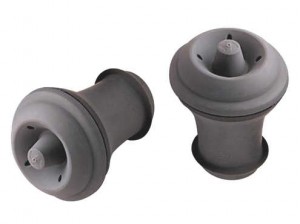 Rarely in our home, but on occasion, I am faced with the dilemma of what to do with leftover wine. My choices are to drink, save, use Martha Stewart’s recommendation of turning it into ice cubes or, with great pain, pour it down the kitchen sink.
Rarely in our home, but on occasion, I am faced with the dilemma of what to do with leftover wine. My choices are to drink, save, use Martha Stewart’s recommendation of turning it into ice cubes or, with great pain, pour it down the kitchen sink.
No matter what the choice, wine, unlike many beverages, has a specific life span. If you have ever tasted a soda after it has been open for several days or watched a cut apple turn brown from exposure to oxygen, then the life span of wine will be an easy study.
The moment a cork is pulled, a wine begins to deteriorate. However, wine has a powerful protective factor that most beverages lack — alcohol. That is why port and sherry, with high alcohol content, can be left open for weeks without oxidizing, while light-bodied, low-alcohol white wine will not last as long.
Keeping wines from being overexposed to air helps in preventing a wine from spoiling. There are many methods and products to keep your wines tasting fresh.
THE VALUES
- The refrigerator (free) Obviously, the least expensive method of preservation is to re-cork the bottle and place it in the refrigerator. It will deter oxygen from the wine and delay oxidation for a few days.
- VacuVin Wine Saver Stoppers (about $15 retail) VacuVin uses a resealing method consisting of a rubber stopper containing a one-way valve and an extraction pump to create a partial vacuum within the bottle, reducing the oxidation in wine. It will be good for about a week.
THE SPLURGES
- Private Preserve Wine (about $25 retail) One of the best methods of preservation is to replace the oxygen in an opened bottle with an inert gas. The easiest way to do this is with a product such as Private Preserve Wine, available in most fine wine stores. A few quick sprays will place a blanket of inert gas over the wine, providing protection from oxidation for a couple of weeks.
- Preservino Wine Preservation Set (about $70 retail) The latest technology is the Preservino, which uses 100 percent argon technology to preserve open bottles. The nozzle is inserted into a custom stopper, and the argon gas is injected through the stopper into the bottle. Argon is as much as 80 percent more effective than other gas products on the market because it is neutral, does not react with wine and safely displaces oxygen from the wine. Other inert gas blends, made of carbon dioxide, nitrogen and argon, eventually dissolve into the wine and create an off flavor.